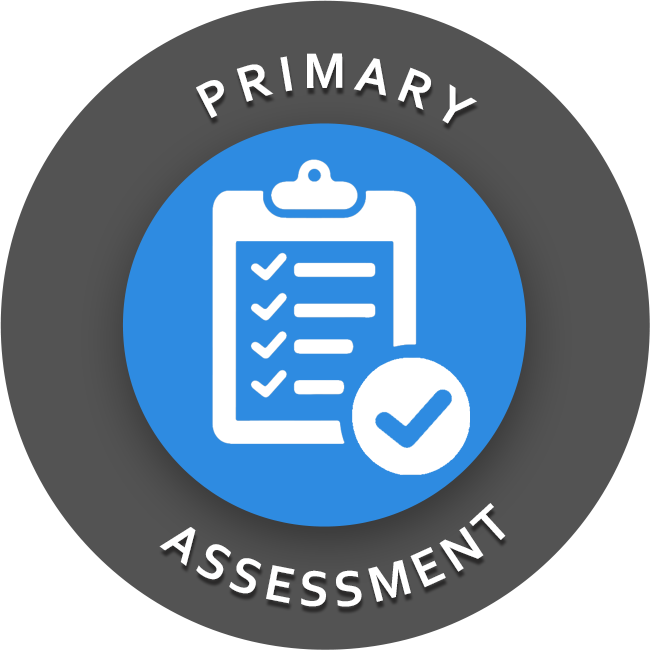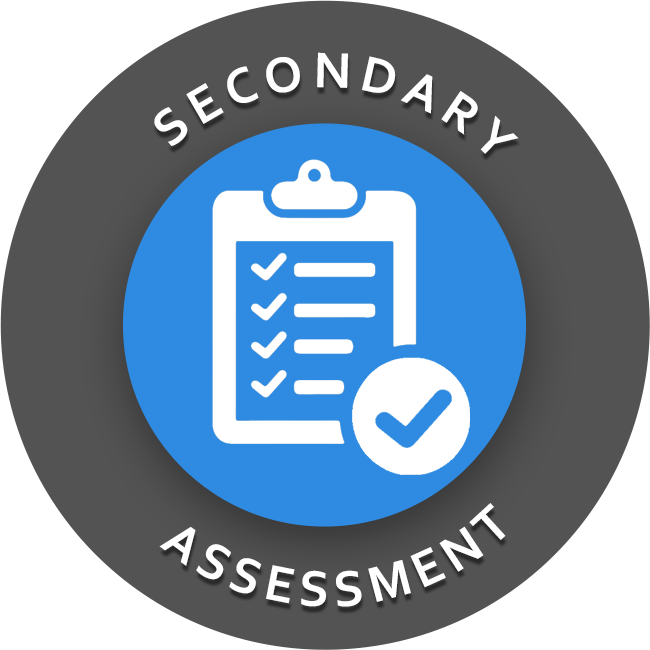
BLS Assessment
Foundational to every ACLS Algorithm is the BLS Assessment. The BLS Assessment is the first step that you will take when treating any emergency situation, and there are 4 main assessment steps to remember.
This is an outline of the 4 steps in the BLS Assessment :
(1) Check responsiveness by tapping and shouting, “Are you all right?” Scan the patient for absent or abnormal breathing (scan 5-10 seconds).
(2) Activate the emergency response system and obtain a AED. If there is more than one rescuer, have the second person activate emergency response and get the AED/Defibrillator.
(3) Circulation: Check for a carotid pulse. This pulse check should not take more than 5-10 seconds. If no pulse is palpable begin CPR.
(4) Defibrillation: If there is no pulse, check for a shockable rhythm with the AED or defibrillator as soon as it arrives. Follow the instructions provided by the AED or begin ACLS Protocol.
For a more in-depth review of BLS refer to the American Heart Association’s BLS Provider Manual.
Remember to assess first then perform appropriate actions, and after each action…reassess.

Primary Assessment for ACLS
The Primary Assessment uses the ABCDE model to systematize the assessment process. The ABCDE’s of the Primary Assessment are:
(A) Airway: Maintain airway and use advanced airway if needed. Ensure confirmation of placement of an advanced airway and secure the advanced airway device.
(B) Breathing: Give bag-mask ventilation, provide supplemental oxygen, and avoid excessive ventilation. Also, adequacy of ventilation and oxygenation should be monitored during this step.
(C) Circulation: Obtain IV access, attach ECG leads, identify and monitor arrhythmias, giving fluids if needed, and use defibrillation if appropriate.
(D) Disability: Perform a general neurological assessment which should include assessment of responsiveness, level of consciousness, and pupil reflex. AVPU acronym may help. (Alert, Voice, Painful, Unresponsive)
(E)Exposure: Ensure that clothing is removed so that a complete visual assessment can be performed. This visual assessment should include looking for signs of trauma, bleeding, burns, or medical alert bracelets.
The Primary Assessment is included in every ACLS algorithm and like the BLS Assessment, it helps to systematize the resuscitation process and improve patient outcomes.

Secondary Assessment for ACLS
The secondary assessment includes a search for underlying causes for the emergency and if possible a focused medical history. This search for for underlying causes, also known as differential diagnosis, requires a review of all of the H’s and T’s of ACLS. Visit H’s and T’s page for a full review.
Performing the focused medical history can be simplified using the acronym SAMPLE. (S)Signs and symptoms; (A)Allergies; (M)Medications; (P)Past Illnesses; (L)Last Oral Intake; (E)Events Leading Up To Present Illness.
Use the links to the left for further details of ACLS Protocol and specific interventions in each ACLS algorithm.
The objective of the review of these ACLS Algorithms is to help prepare you for the ACLS written test and the ACLS Megacode. After reviewing, you can test your skills and knowledge by accessing the ACLS Megacode Simulator and ACLS practice exams.
Richard` Tenney says
no comment
Sumit Khanna says
Hi Jeff
Im in australia.
don’t you guys follow DRSABCD approach for BLS.
please clarify.
Jeff with admin. says
We do not use that acronym for BLS. We actually do not use an acronym for the process, but we use a series of steps. I think it would be a great thing for AHA to pick up the DRSABCD. I’m not sure if they have not done this because of copyright issues.
Kind regards,
Jeff
Darleen Rocha says
Thank You
Kamyar Maghazehe says
So as part of the secondary assessment, do we first look for our H&P’s than consider detailed medical history?
Jeff with admin. says
Consider the H’s and T’s of ACLS and then if possible gather whatever medical history you can. Kind regards, Jeff
Otto Montero says
Thanks
Pam Aufhammer says
So happy to have found your site. 🙂 Concise & to the point!
Thanks Jeff.
Veronica Roberts says
Very informative, thank you
Joyce Maniam says
Great introductory.
Rosali Elizabeth says
Brief & fabulous
Thank you
Mina Adib says
Very Informative, to the point.
Thanks Jeff
Elaine McKinney says
This is a great start to my day. Time for me to due acls again and glad to see you are still here
Catherine Budu says
very informative.
thx
dclark5123 says
no
Jeff with admin. says
I’m not sure what you are referring to with your comment. Can you clarify please?
Kind regards, Jeff
HHS4717 says
Great start, setting a foundation of understanding and organization of process for
implementation.
Fastjack says
When first assessing patient, should we not check for pulse first instead of respiration?
Jeff with admin. says
There are 3 parts to the Systematic Approach to ACLS:
In the BLS assessment, a carotid pulse is checked prior to performing anything having to do with breathing. This addresses the CAB.
Once you begin the ACLS primary assessment, you will address the patient using the ABCD acronym. The CAB occurs in the BLS Assessment.
For BLS, prior to 2010, we use to address airway first by assessing breathing and giving 2 rescue breaths. This is no longer the case. However, once the ACLS primary assessment begins, it starts with airway as stated.
You can find this information on Pg. 36-38 of the AHA ACLS Provider Manual.
Kind regards,
Jeff